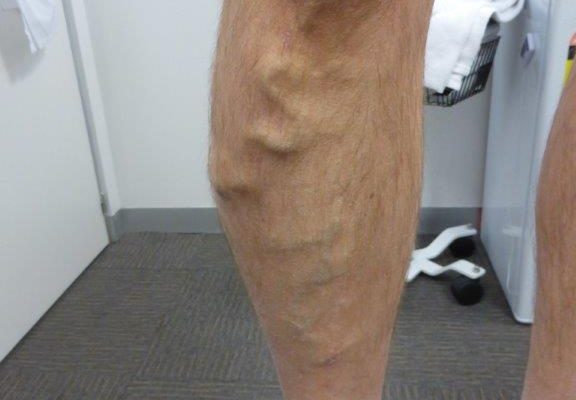
Do Varicose Veins Need to Be Treated?
Varicose Veins are basically bulging or enlarged veins visible on the surface of the skin. It is a very common condition with medical studies suggesting around 17% of men and 31% of women will develop Varicose Veins at some stage during their life.
Risk factors for developing Varicose Veins include older age, being female, pregnancy, family history, obesity and occupations that involve prolonged standing. Diet, physical activity and the use of the oral contraceptive may also be important in some people.
The reason that people come to our clinic to have their Varicose Veins assessed fall broadly into 3 categories.
- Patients concerned with how ugly the veins look
- Patients troubled by symptoms caused by the Varicose Veins
- Patients wanting to have their Veins checked to see if they need them treated to prevent future problems
COSMETIC
Concern about the cosmetic appearance of Varicose Veins can be a very variable consideration as what worries one person isn’t necessarily a concern to others. The good news is that a significant improvement in the appearance of Varicose Veins can nowadays be quickly achieved with non-surgical treatments.
SYMPTOMATIC
Varicose Veins can cause a variety of symptoms with the commonest being heaviness, tiredness, aching and swelling. Other symptoms such as cramping and itchiness can also occur. Varicose Vein symptoms are typically worse at the end of the day and exacerbated in hot weather. Symptoms can often be improved by elevation of the leg, massage and use of compression stockings.
Treating the underlying blood flow problem in the Varicose Veins can usually quickly resolve these symptoms. It is important to realise that many of the symptoms caused by Varicose Veins can also be caused by other conditions which is why a proper Leg Vein assessment is critical to determine if symptoms are being caused by the Varicose Veins or something else.
PREVENTATIVE
Untreated Varicose Veins can potentially cause medical problems in the future and the 2 main concerns are the possible development of Chronic Venous Insufficiency (CVI) or the risk of a Deep Vein Thrombosis (DVT).
CHRONIC VENOUS INSUFFICIENCY
If Varicose Veins result in significant back pressure (called venous reflux) this can mean good arterial blood struggles to reach the skin’s surface and then problems can develop in the skin ranging from itchiness and dermatitis (called Varicose Excema) to poor healing and the development of leg ulcers (Venous Ulcers).
The treatment of Varicose Veins can help treat these conditions if they do occur and early treatment can prevent them occurring in the first place. A very important consideration for patients with Varicose Veins is whether treating the Varicose Veins can prevent the risk of progression to Chronic Venous Insufficiency. The likelihood of developing Chronic Venous Insufficiency is evaluated at the initial Leg Vein Consultation but patients who have had a Deep Vein Thrombosis in the past or have a family history of leg ulcers are at much greater risk.
DEEP VEIN THROMBOSIS
Varicose Veins can develop after a DVT (called Secondary Varicose Veins). This occurs because the deep vein clot damages the vein circulation in particular the valves in the veins and bulging Varicose Veins develop as a result of this valve damage. It is well known that if you have had a DVT once then you are at much greater risk of another DVT in the future.
It has long been recognised that there is an increased risk of DVT with long distance airplane flights (it has been suggested the risk of DVT doubles with flights over 5 hours). Many authorities believe this risk of DVT associated with long haul flights is greater for people with Varicose Veins and that treating these Varicose Veins and controlling the underlying blood flow problem will consequently reduce the risk of DVT associated with flying.
It is worth noting that a recent large study of over 400,000 adults published in the prestigious JAMA medical journal in February of 2018, found that patients with Varicose Veins had a significantly increased risk of developing DVT compared to controls without Varicose Veins which was calculated as five times more likely.
In summary, there are many different reasons for seeking to have Varicose Veins treated, including disliking the appearance, relieving symptoms and preventing future medical problems. For many patients it is often a combination of several concerns that makes the treatment of Varicose Veins worthwhile. Fortunately in modern leg vein practices great results can be achieved in removing unwanted Varicose Veins without surgery and with minimal downtime.

Leave a Reply